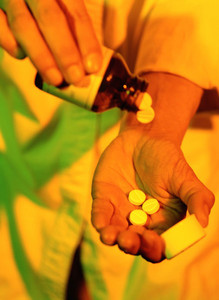The Australian Pharmaceuticals Industry Council (PIC) has agreed to a broad strategy for the pricing of biosimilars so as to encourage the development and entry of biosimilars into the market place.
The agreement by PIC, which represents the country’s pharmaceutical and biotechnology industries, follows major reforms to Australia’s Pharmaceutical Benefits Scheme (PBS) by which the government heavily subsidises the cost of prescription medicines including generics. PBS operates through a patient co-payment arrangement, under which patients have paid up to AU$35.40 per prescription, and the government paid the rest. Until recently, prescription reimbursement prices were fixed through negotiations between the Department of Health and Ageing and pharmaceutical companies. However, with the increasing availability of cheaper alternatives for the same indication including generics, pharmacists have been able to purchase these from wholesalers at lower cost, and pocket the difference.
In 2007, the government began the introduction of a new strategy to curb rising healthcare costs by making it compulsory for manufacturers to disclose the true market value of listed drugs. A system of price reductions was then introduced based on the allocation of drugs to one of two categories: single brand drugs are listed in the F1 formulary, and multiple brand drugs including generics are listed under F2. When a generic version of a single brand drug gains market authorisation, both this and the brand-name originator product are placed into F2, and annual price reductions are applied to the brand-name product until the cost reaches close to its market value.
On 1 April 2012, a new agreement between the government and manufacturers means that the price disclosure policy is now in full effect, resulting in huge savings for both government and consumers alike on prescription medicines [1]. Owing to the complexity of determining clinical equivalence with biosimilars–or Similar Biological Medicinal Products (SBMPs)–compared to small molecule generics, PIC has agreed that pharmacists should not switch patients between different brands of the same biological molecules once they have started treatment. PIC also agreed that biosimilars should be managed separately within PBS owing to ‘the rapidly evolving scientific knowledge supporting market entry and commercialisation’. There was disagreement, however, on precisely how biosimilars should be categorised. One group, AusBiotech, suggest that ‘the SBMP and their comparator biological could move into F2 and take the standard 16% mandatory price cut, providing there is differentiation between small molecules and biologicals in F2 as designated by an asterisk (*).’ AusBiotech also agreed with a proposal to extend the price disclosure data collection period from 12 to 24 months.
Related article
Australia’s biggest-ever generics price cuts coming in April 2012
Reference
1. GaBI Online - Generics and Biosimilars Initiative. Australia cuts prices of 13 more drugs on PBS. GaBI Online [www.gabionline.net]. Mol, Belgium: Pro Pharma Communications International; [cited 2012 Aug 3]. Available from: www.gabionline.net/Policies-Legislation/Australia-cuts-prices-of-13-more-drugs-on-PBS
Source: Our-way-to-health, Daily Telegraph








 0
0











Post your comment